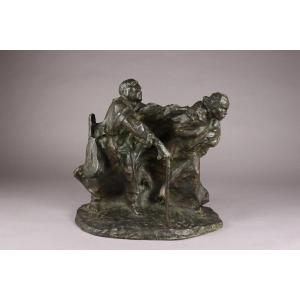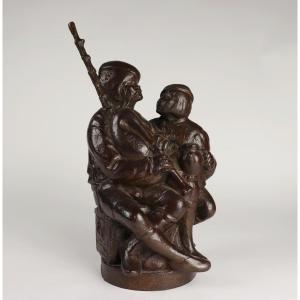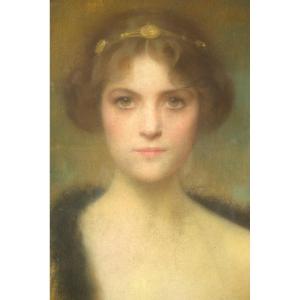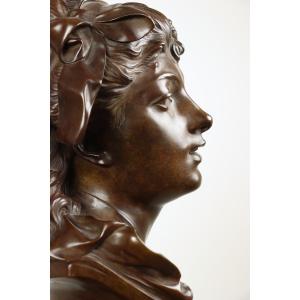He experienced a difficult first period, sharing the fate of many of his contemporaries, and his works met with little success. It is certainly during this time that the sculptor focuses on the representation of misery.
It was the presentation at the 1901 Salon of two works, The Musicians and The Blind Man, that marked a turning point in his career. The works were noticed by the critics and Julius Meier-Graefe, director of the Galerie Moderne, offered him a contract.
He then moved to a studio in Montmartre, next to Carl Milles', and founded the Société des Artistes Réalistes in 1902.
He left Paris permanently in 1910 to settle in the artistic colony of Darmstadt.
The work we present was cast in 1914; it was also published by the founder Eugène Blot, a copy of which is kept in the Musée Sainte-Croix in Poitiers. Models in plaster were also published by La Maison Moderne.
A work of breathtaking expression, the figure of the blind musician clings to the shoulder of the young woman who guides his steps. His other arm leans on a cane, while at his back hangs a guitar, certainly his only means of subsistence. The woman advances with a determined step, seeming to fight coldly against the trials of life. A heroic strength of character emerges from her face, contrasting with the daze and the emptiness of the blind man's eyesockets.
A deep reflection on the meaning of life, the old blind musician, at the mercy of the difficulties of the world, unable to see ahead, is guided by a higher force, a kind of absolute destiny that would open the way for him.


















































 Le Magazine de PROANTIC
Le Magazine de PROANTIC TRÉSORS Magazine
TRÉSORS Magazine Rivista Artiquariato
Rivista Artiquariato